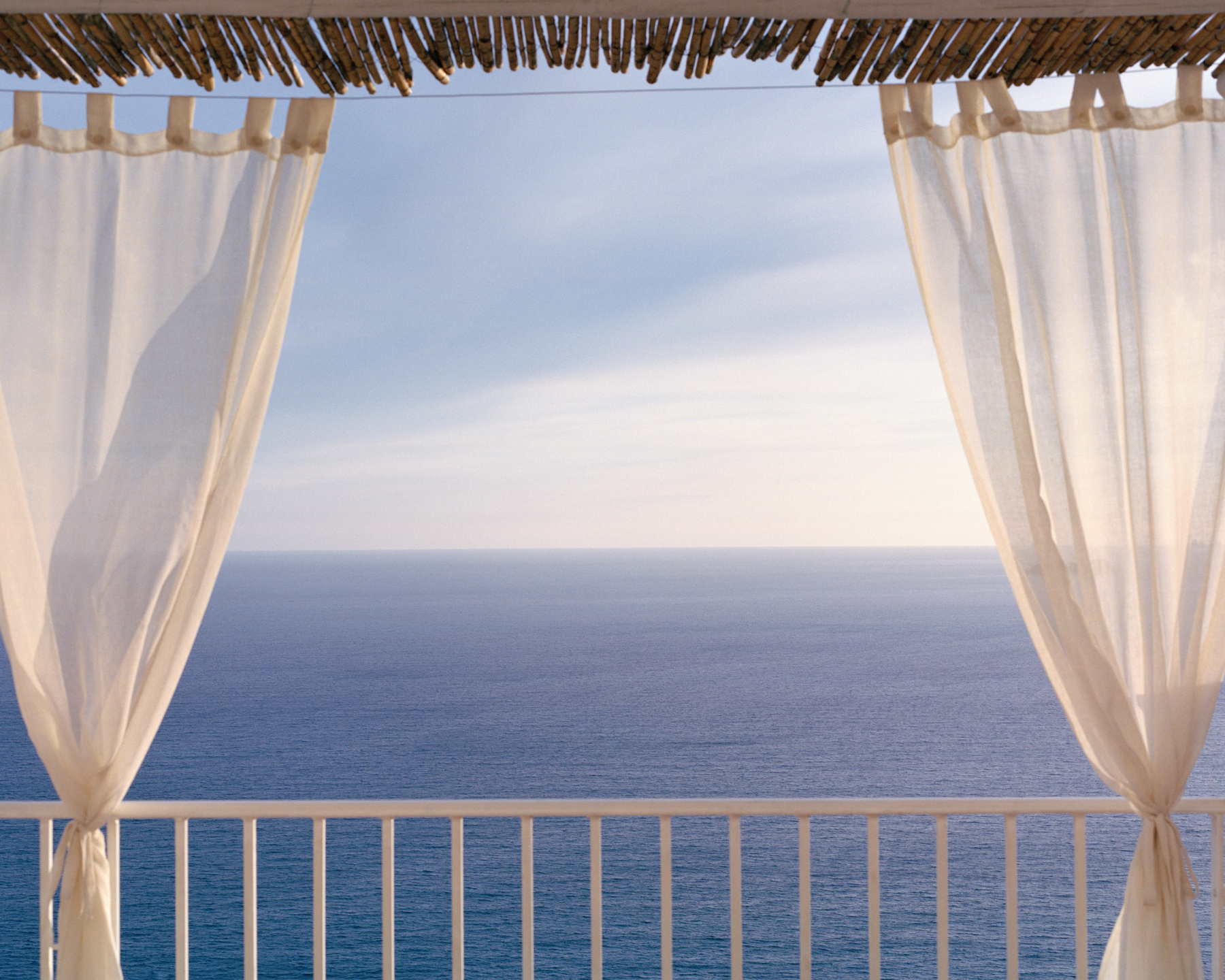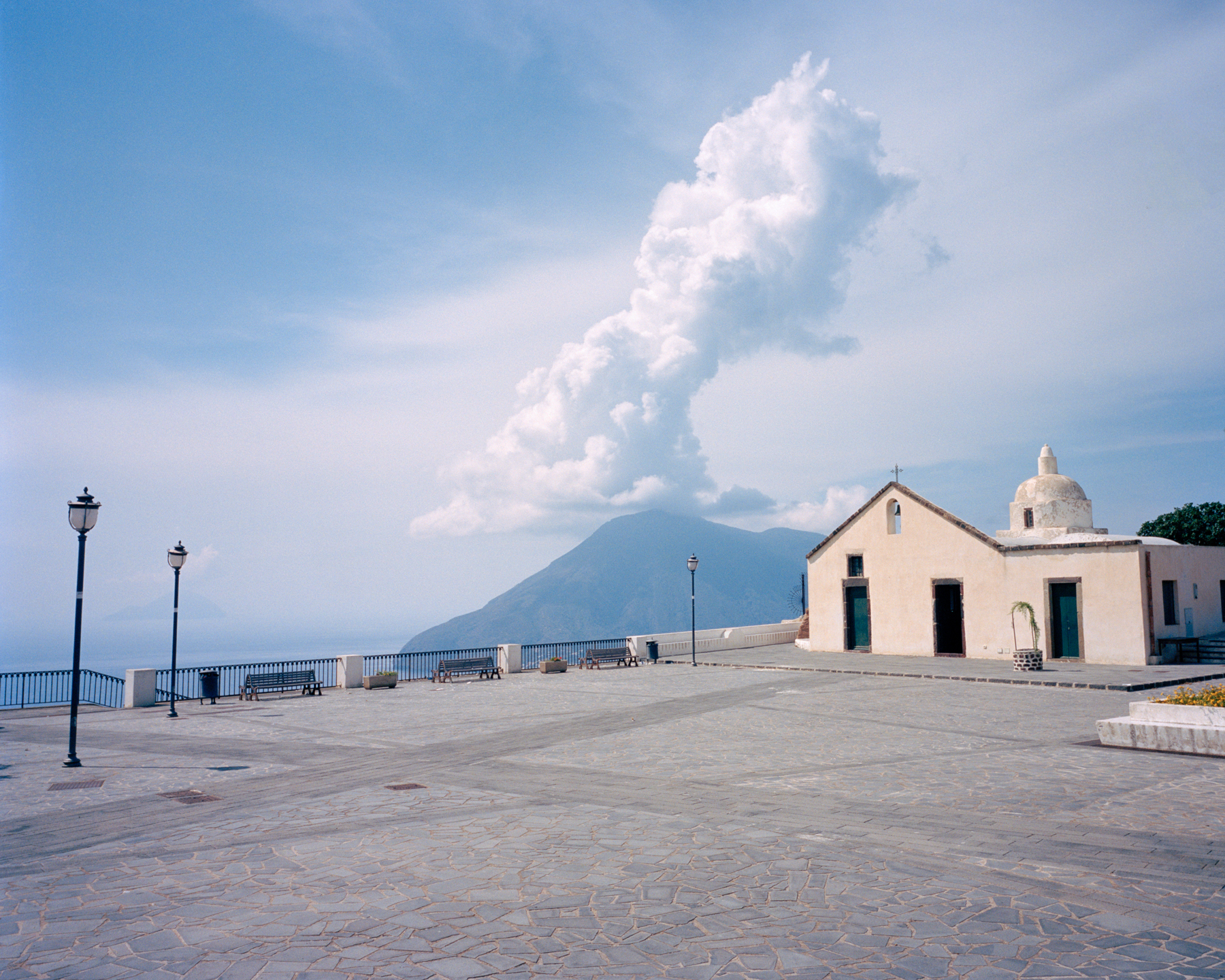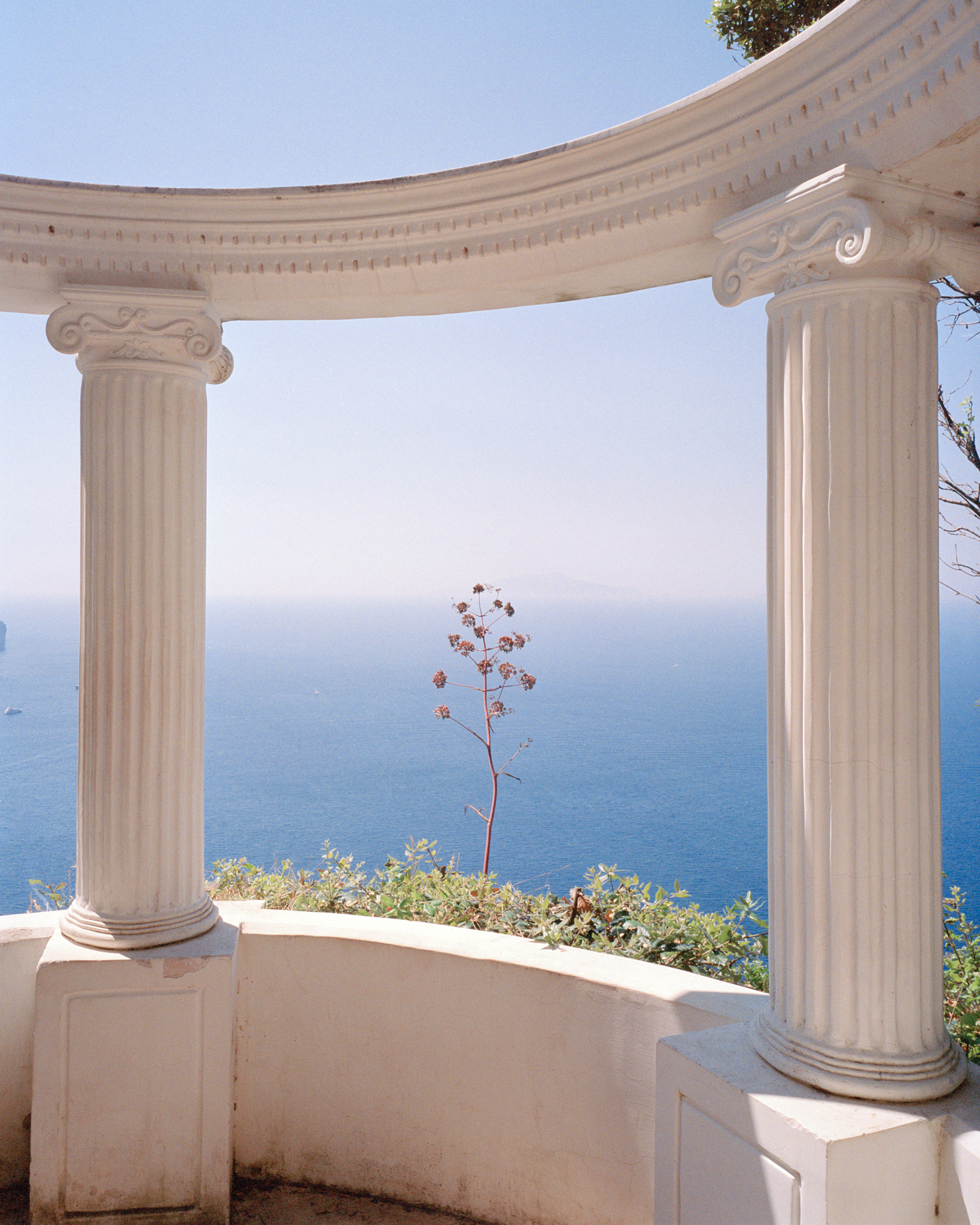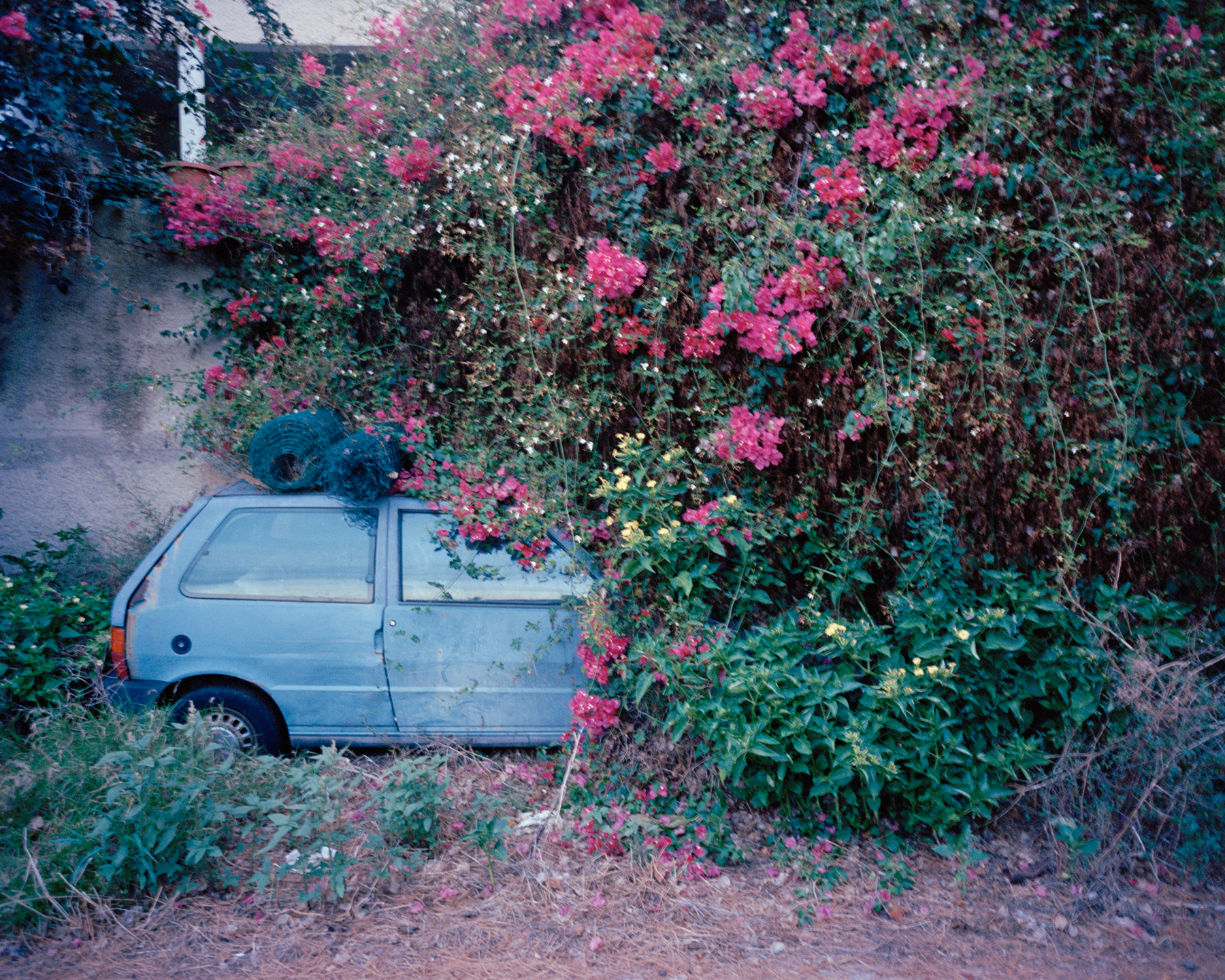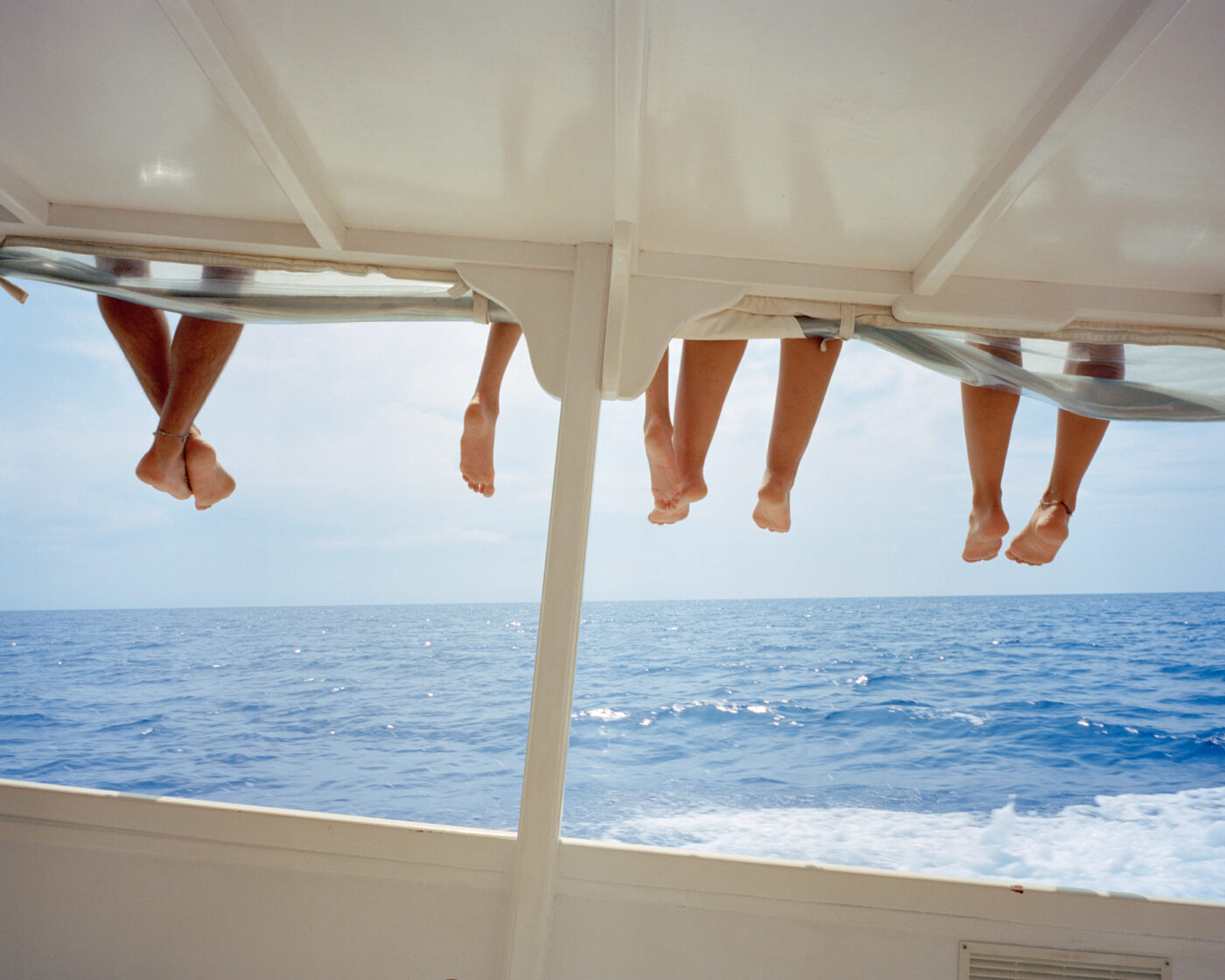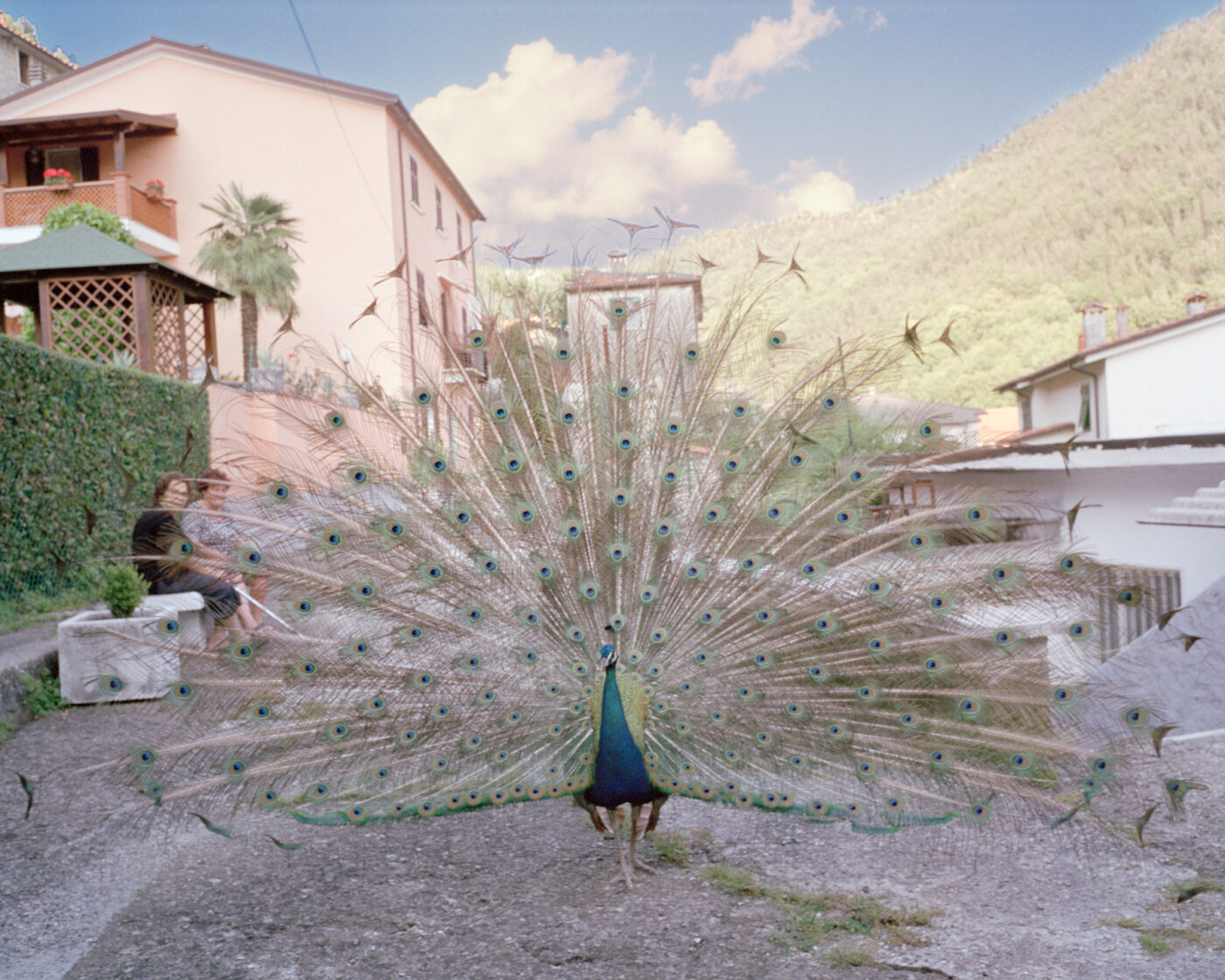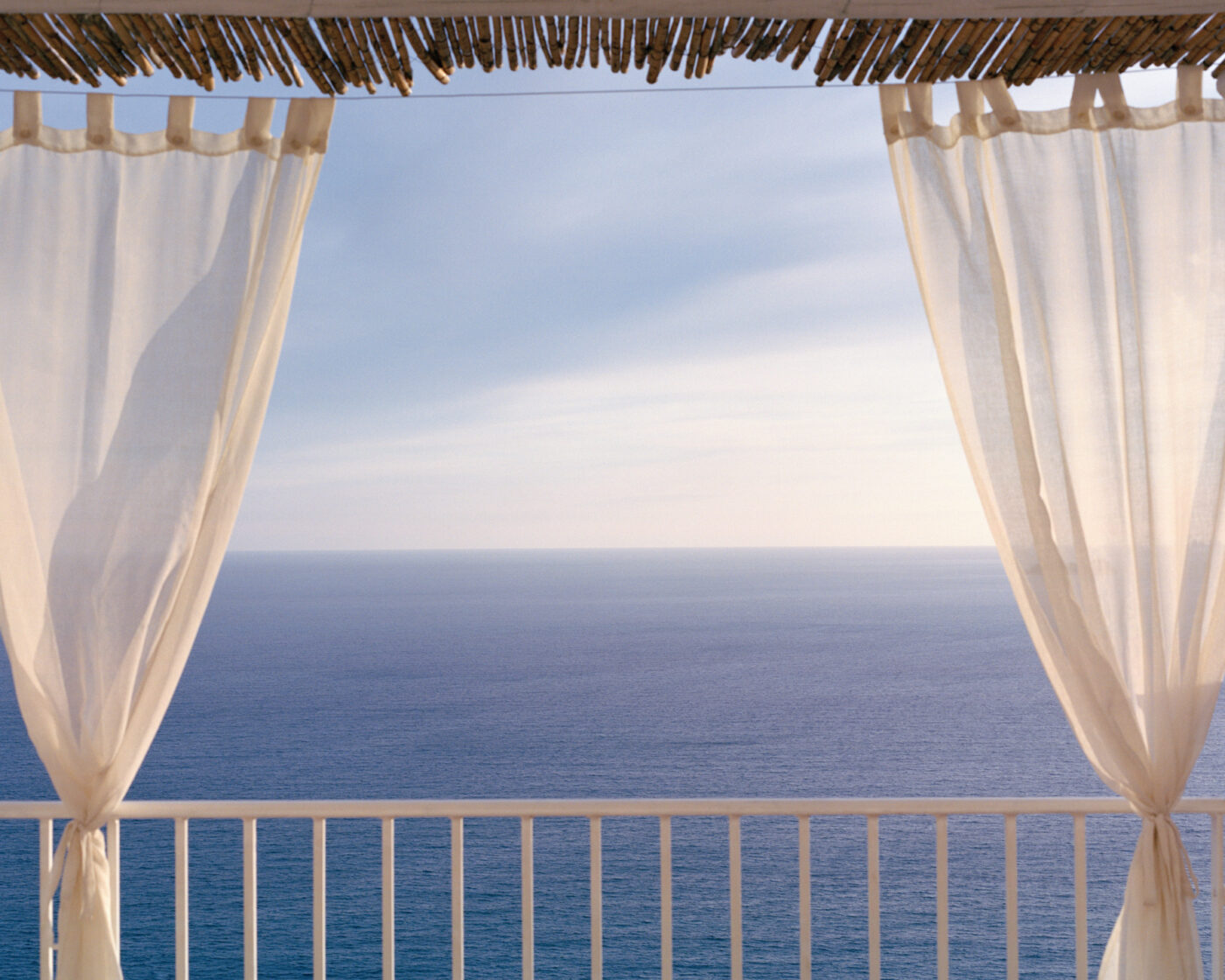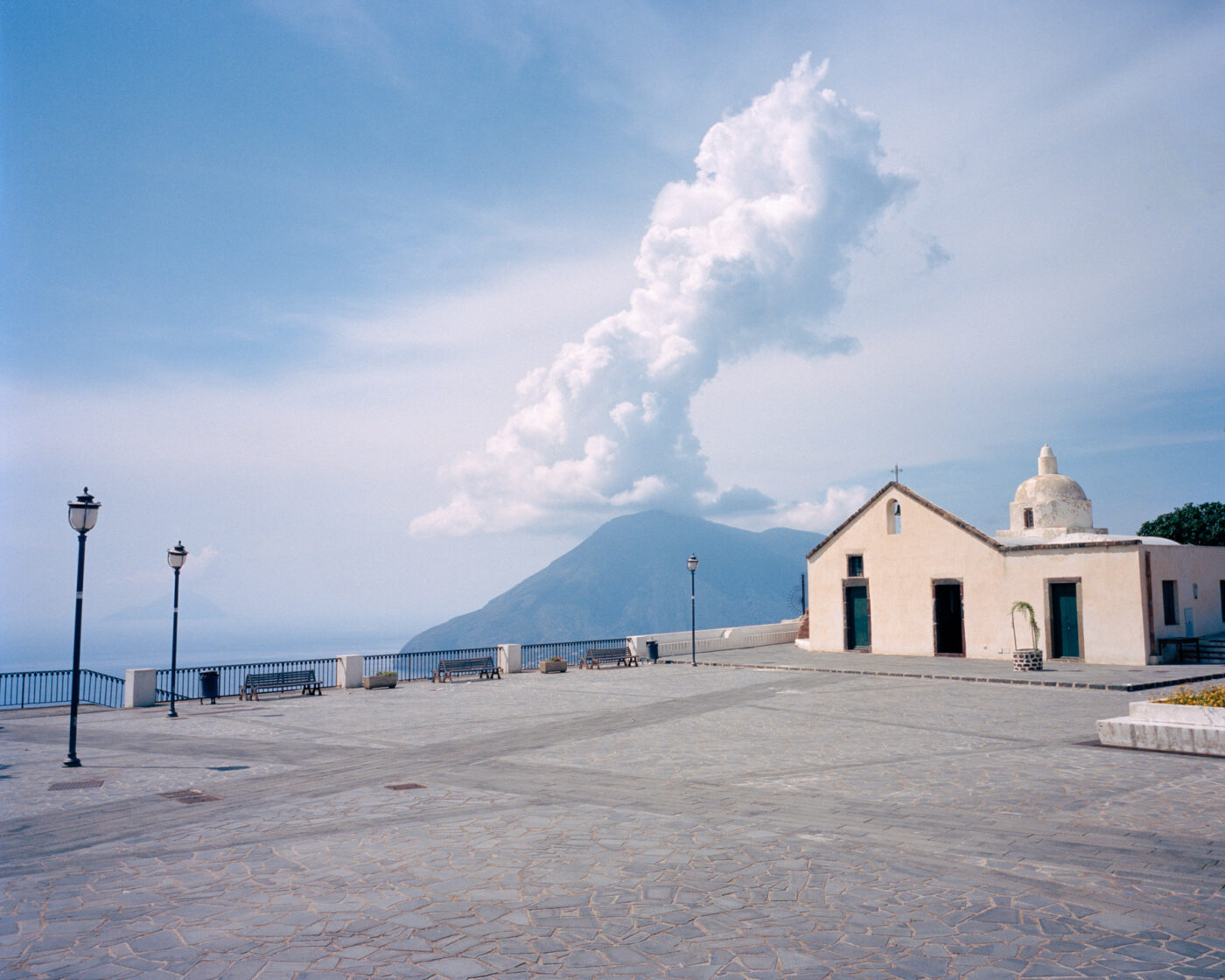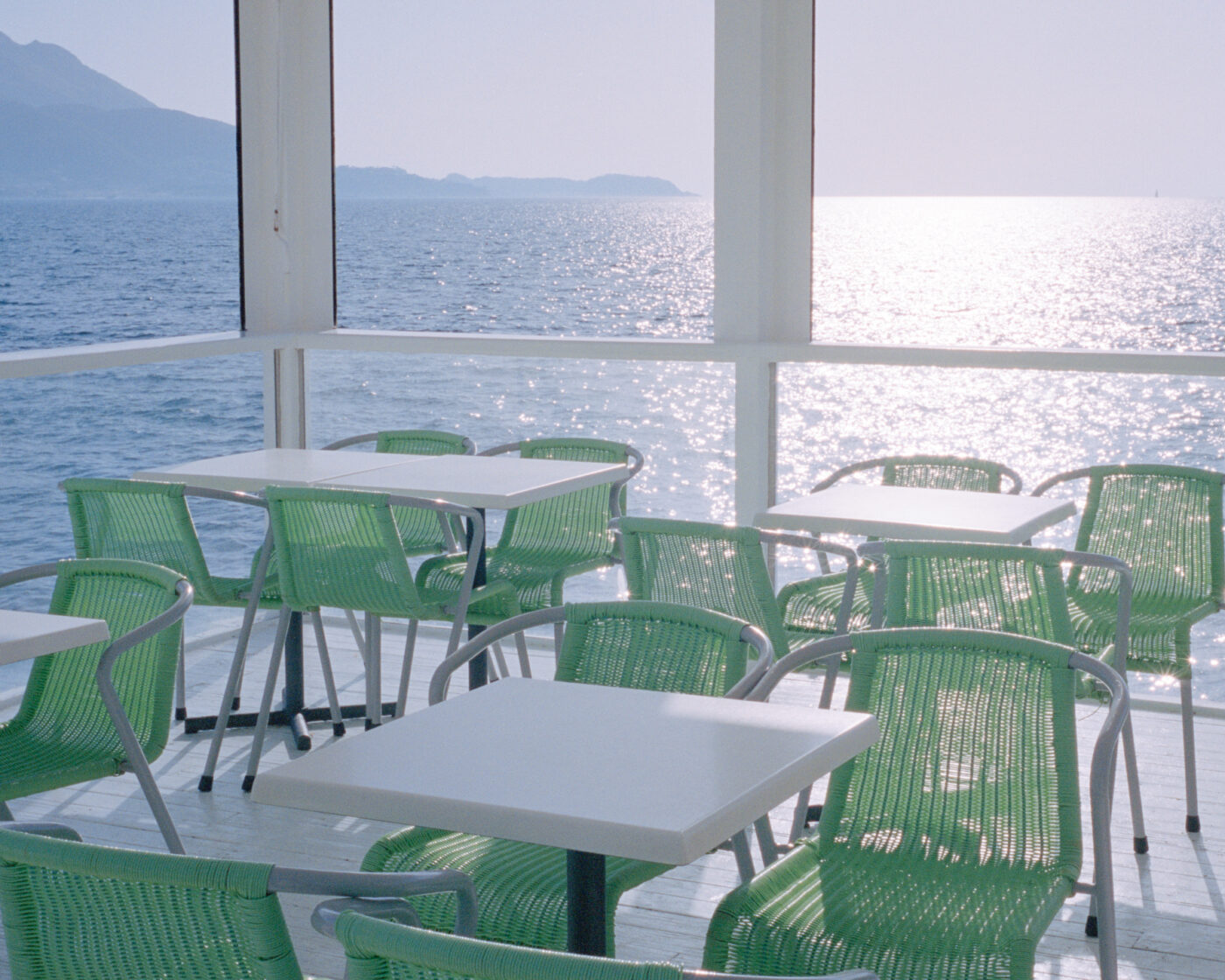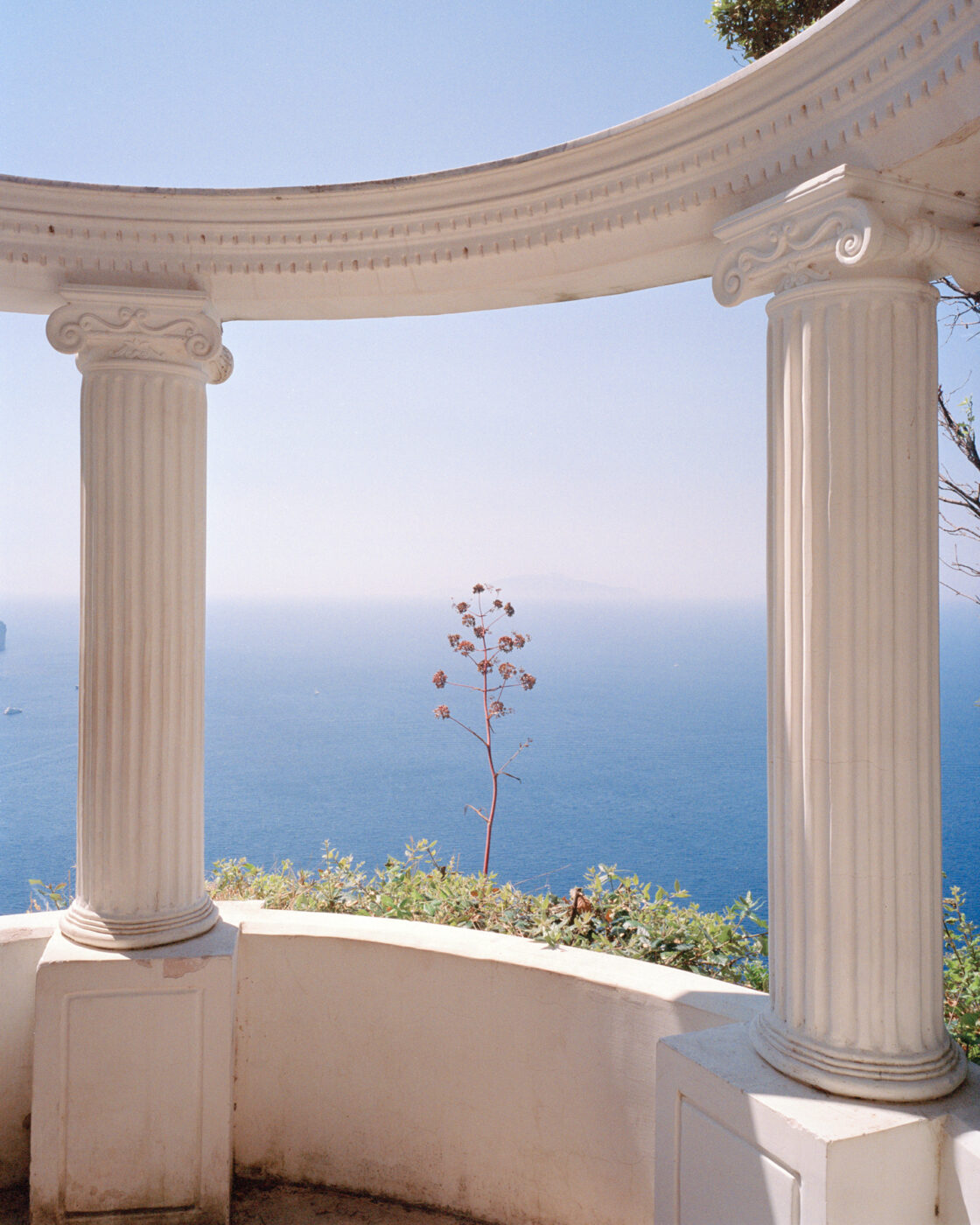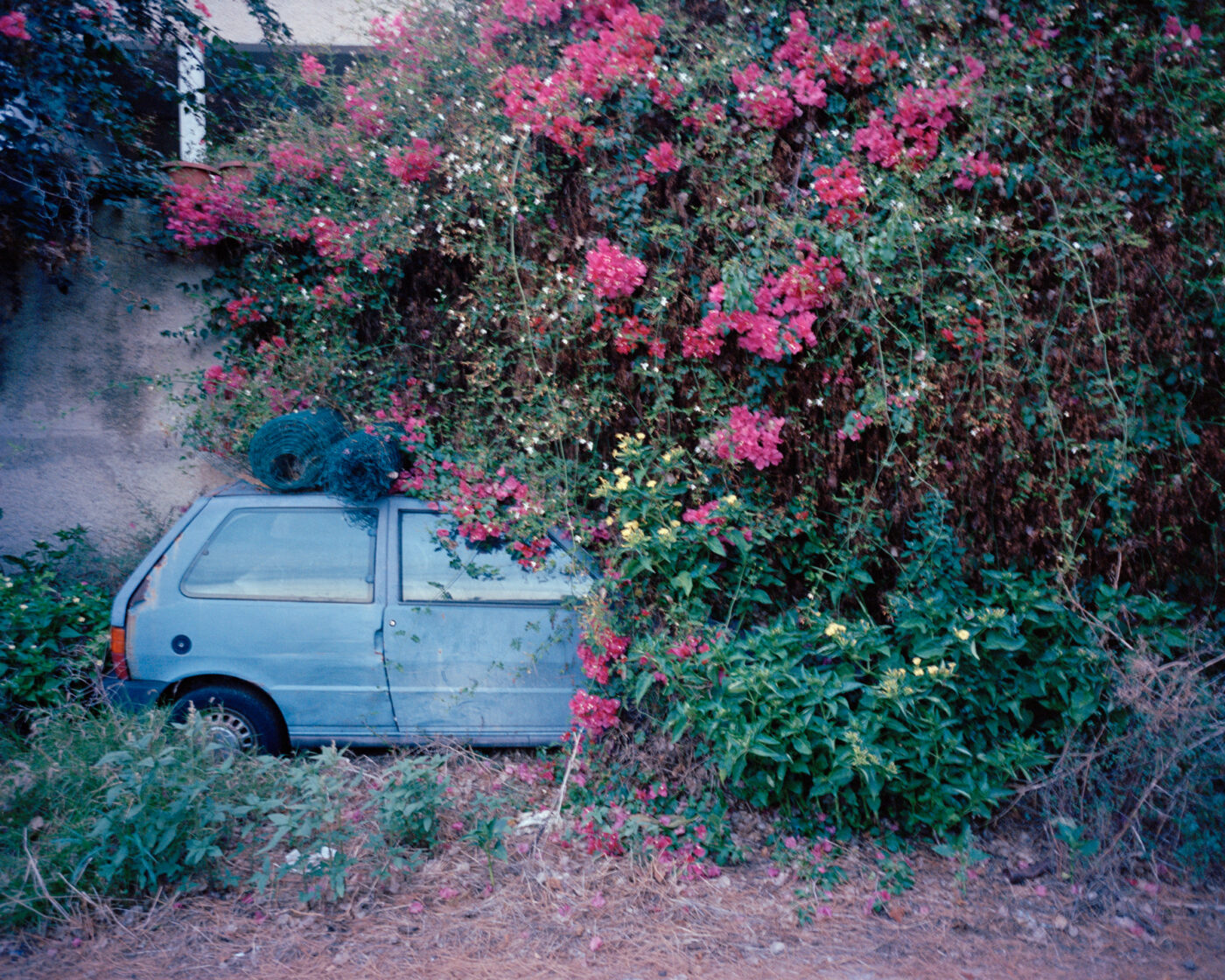Imagine you’re on holiday in Italy. It’s a summer’s afternoon, and the intense blue of the sky contrasts beautifully with the off-white tones of your apartment’s walls, which you can just glimpse as you peep through the branches of the olive tree under which you’re sitting. As the sun dips lower, the sky changes colour–from piercing, pure turquoise to varying shades of apricot and cherry, much like the sun-warmed fruits you ate in the afternoon. The stones radiate heat and your view out to sea… It all sounds like a hazy, rose-tinted memory. Maybe you’ve spent a summer in the south of Italy, or maybe you’ve never once set foot on the peninsula, but sometimes, even in the depths of winter, photographs can be the antidote to missing the summer sun. Sometimes their colours can really take you there.
It’s exactly colours that are of utmost importance to Michele Iacobini, a young photographer who hails from Rome and has just been whizzing around the city on his scooter when we meet. Surprisingly, considering the city’s wealth of magnificence, the Eternal City is not where his passions as a photographer lie: his great love is southern Italy, especially the Aeolian Islands. It’s the colours that magnetically pull him to the south: the soft, pastel shades; the deep tones of the sunsets and the sparkling hues of the sea. Unlike some of his contemporaries, Michele is focused on taking images of the full scene, rather than individuals. Portrait photography is currently having a bit of a moment–it’s very popular on social media as well–but Michele likes to avoid people as the subject of his “personal projects.” This focus creates a clear divide between work–he’s a fashion photographer by day–and play. “I actually don’t care to have a main subject in a photo, because I like the colours,” he explains, adding that he instead looks for “atmosphere” and a particular palette in his photographs.
There’s a dreamy consistency to Michele’s photographs, something that really captures a feeling of wandering through the landscape in the south of the peninsula. I ask if there’s a particular secret to this ethereal quality. “I always try to look for the same light… I prefer the really strong light of midday when there are no shadows, or twilight, or sunset,” he tells me.
Viewed from a certain angle, his photographs look almost as if they are paintings; they seem more than just a moment captured on camera. “I would like [the viewer], looking at the photo, to feel what I was feeling in the moment that I was taking the photo,” he continues, before adding, “It’s something kind of intimate, this type of feeling.” There are various ways of succeeding in this, one of which is, again, using colours carefully. “I like to use pastels because I think that in [particular] landscapes [they are] more realistic,” he tells me, adding, “The colours during the sunset, or when it’s foggy, are soft. I want you to feel the softness.”
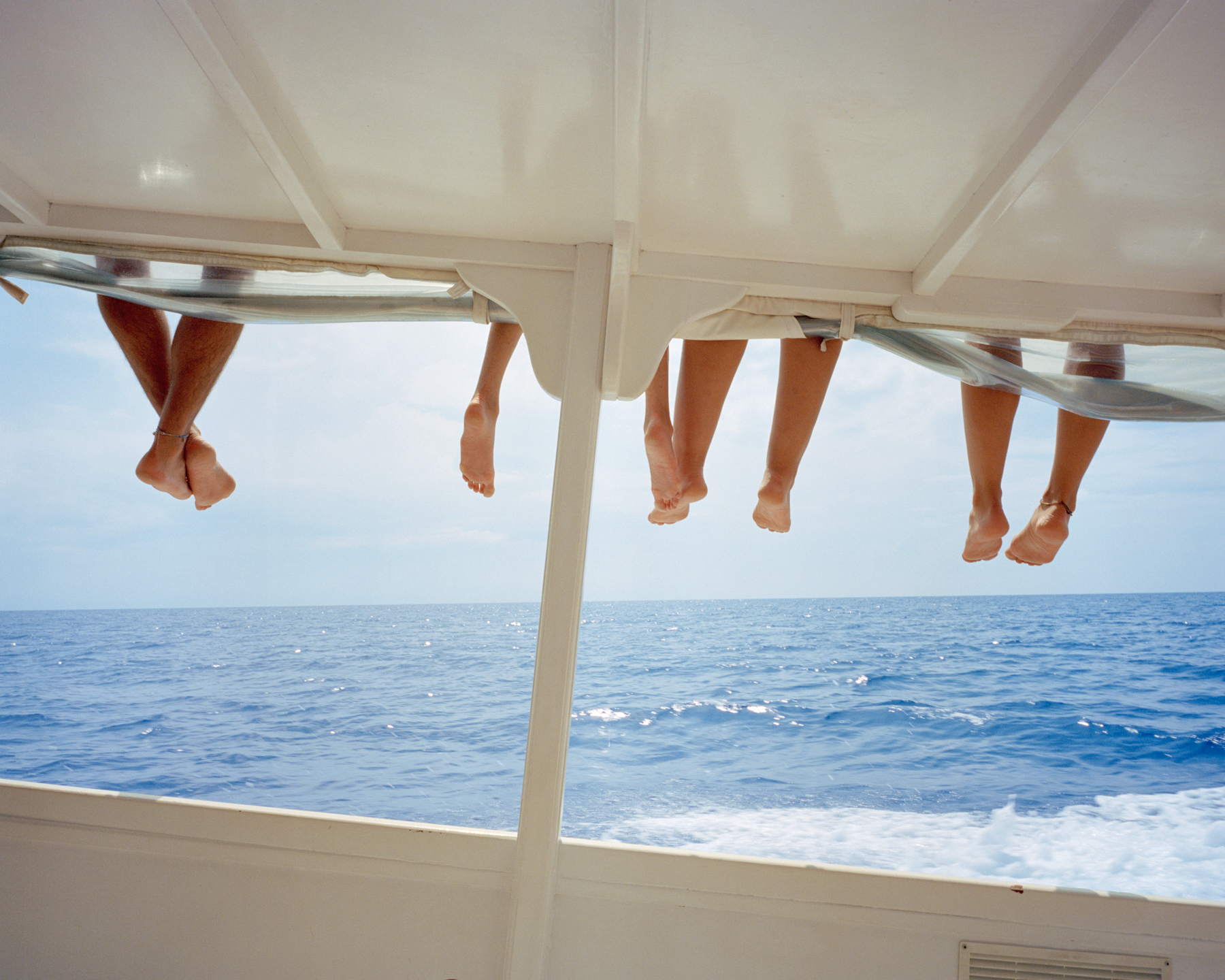
One of his images particularly stands out to me: I really feel as if I was there too as the camera shutter clicked. It’s the view from the back of a ferry on the way to the Aeolian islands, looking out onto a hazy blue summer sea, inadvertently blocked by four pairs of sun-kissed feet and the cream-coloured, softly shining deck. You can almost smell the salty spray from the wake of the boat and hear the quiet whirr of the engine and feel the splash of the water on the sides of the little vessel. You’d never be able to tell that Michele was seasick the entire ride. Perennially sick, he would sit at the bottom of the ferries during these trips to get out of the sun, unintentionally getting a view of ferry travel from a different perspective. The photo evokes a, albeit lighter, version of the alienation Michele saw first hand in the summer of 2018, when he was volunteering and helping migrants as they arrived on the island. That year, the Italian government had approved a bill abolishing key forms of protection for migrants, making it easier for migrants to be deported and harder for them to apply for refugee status here. It was a reality that was hard to synthesise with the hordes of tourists relaxing on holiday and enjoying the summer sun of Sicily.
This photo is just one from the selection of beautifully blue-toned photographs, primarily featuring the islands, I’ve been sent in preparation for the interview: the deep blues of the sky, the seagreens of patio chairs, the black volcanic rock of Stromboli blend almost seamlessly into each other. A volcano may peep sleepily out from the horizon, while two stray clouds traverse an otherwise empty sky. On the islands of Michele’s photos, there’s rarely a person in sight. This all seems slightly ironic when the huge number of migrants who were–and still are–trying to reach Italy is considered. Accordingly, the emptiness oscillates between peaceful and unnerving. Michele tells me that his time spent in these quiet locations does, in fact, have something to do with a need to clear his head in between volunteering shifts.
As he approaches his 30s and looks back on his career thus far, Michele is keen to point out another influence on his work. While he was still a student, he worked as an assistant for Roman photographer Fabio Lovino, who helped shape the elements of his work “involving nature.” Prior to that, Michele had “always” wanted to be a photographer. Sitting behind a desk at school didn’t come naturally to him, but it wasn’t until a teacher encouraged him to study something that he actually liked, to stop him from “failing,” that he seriously turned to photography. After highschool, he went on to study at Italy’s leading photography school in Rome–Istituto di Fotografia e Comunicazione Integrata di Roma (ISFCI)–and then to New York, where he won a scholarship for a Master’s degree, before returning to Italy. He “missed the Mediterranean sun” too much.
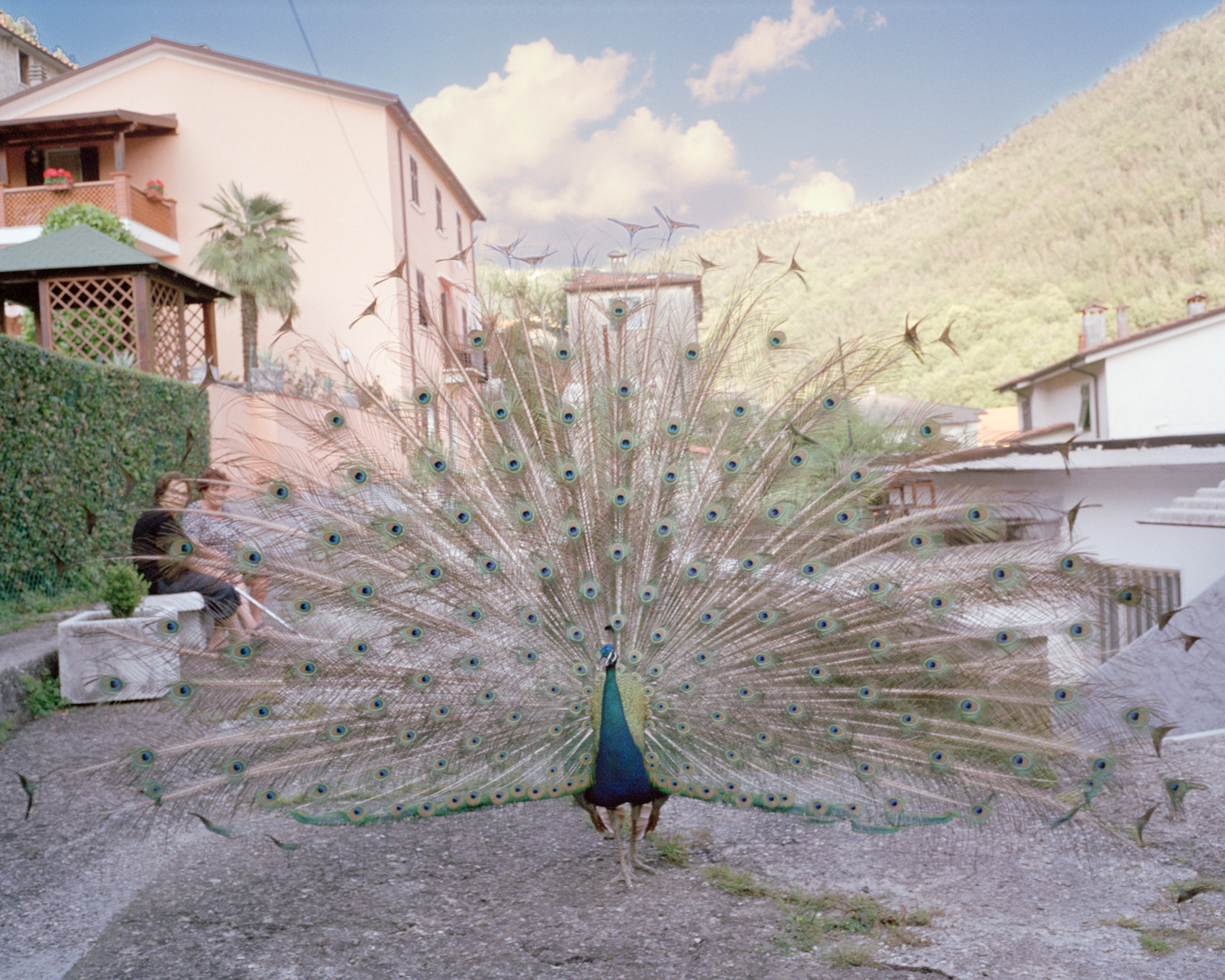
Inspiration for his photographs also comes from the Italian cinema of the 1960s and 70s, and German photographer Wim Wenders. The camera that Michele uses for his personal photographs also hails from these years: the 1970s medium format film camera produces images with a slightly grainy look and bright quality to them, properties Michele attributes to the camera and its age.
There are just a few exceptions to his island photographs, in which that 1970s lens is pointed at a person and, namely, one very angry peacock, glaring intently (and very directly) into the camera. When Michele came across a pair of old ladies in Colonnata, Tuscany, the duo warned him to be careful of an “aggressive” male peacock on the prowl around town. Thinking it would make for a great photograph, Michele went off on a bicycle to hunt for the bird–without any luck. Some hours later, Michele returned to where the ladies had been perched, and there was the peacock, irritable as ever. “[It was] kind of attacking these women and they were waving their walking sticks at it saying ‘get away, get away’ [and the bird] had his massive tail open,” he recalls. Ever the opportunist, Michele managed to get the peacock “to open its tail with these two women in the background,” and there you have the photo. “Beautiful and fun in the same moment,” says the young photographer with a laugh.
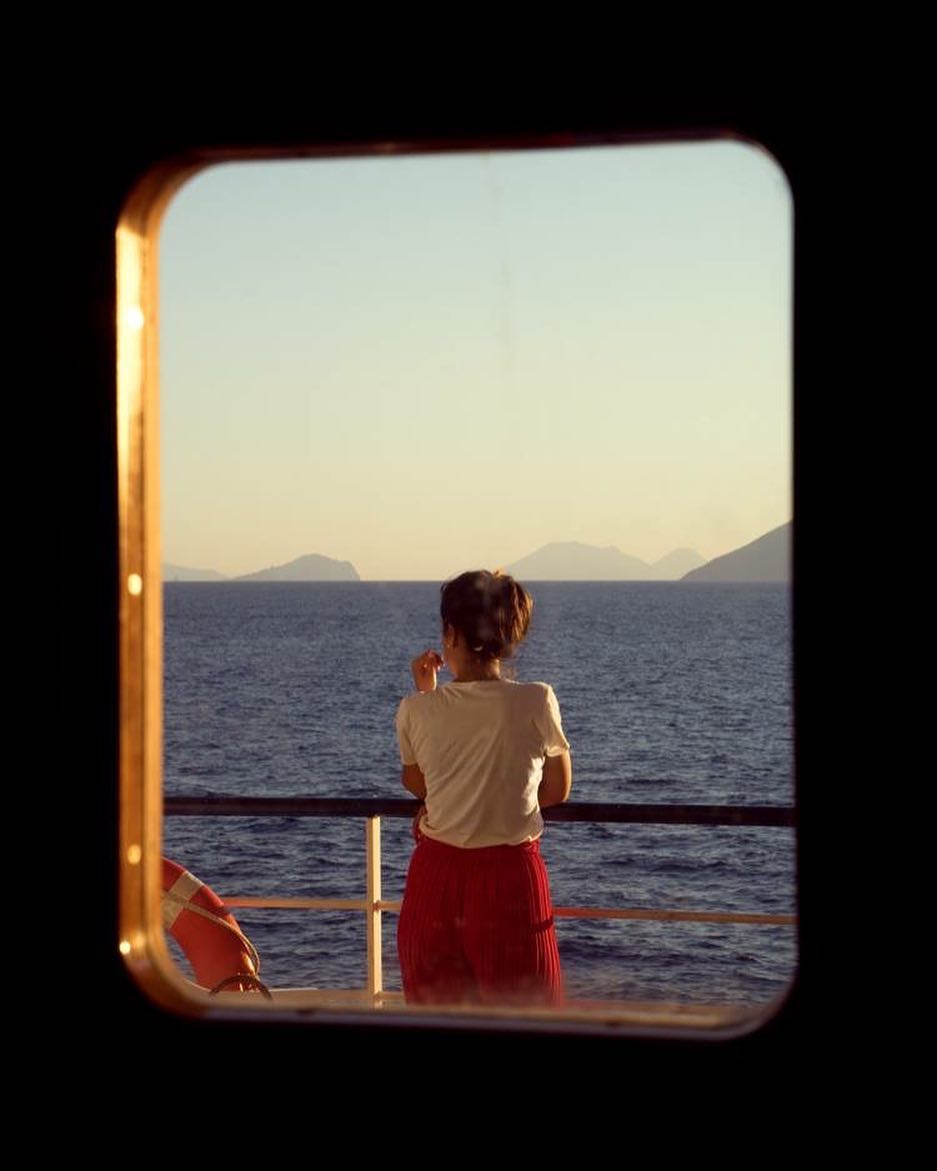
Beautiful and fun. The selection of photos I’ve been sent certainly seem to be, and Michele manages to balance a serious appreciation of colour pairings with an eye for the amusing. There’s just one more photograph I really want to hear the story behind. It’s another view from a ferry out to sea, but this time a girl in red trousers fills the foreground of the picture, while islands dot the horizon, the tangential light giving the scene warmth. I’d rather like a copy for my wall; it’s the kind of photo that always seems somewhat familiar (turns out it’s been very popular on Instagram and has been exhibited at Paris Photo, which may be why I feel some deja vu). “That was the first ferry I took to Sicily,” says Michele, “It was like the calm before the storm.” I can feel the calm too. Maybe the carefully chosen colours really do have something to do with it. And that’s the end of our chat, but I leave with a longing to travel down to Sicily for some southern Italian sunlight and endless views of the island-dotted sea.
